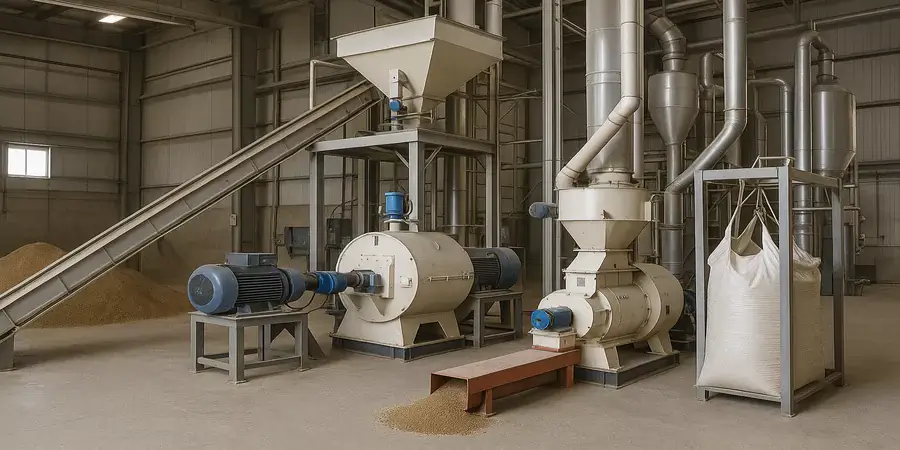Ingredient Sourcing
The feed manufacturing journey starts with responsible ingredient sourcing. Every batch begins by identifying nutrient-rich grains, proteins, vitamins, and minerals that provide balanced nutrition for livestock species. Whether sourcing from local farming cooperatives or working with major industrial suppliers in North Carolina, producers seek reliable ingredients with traceable origins. Top suppliers ensure raw materials are screened for mycotoxins, heavy metals, and other contaminants, setting the standard for a safe and reliable food supply chain.
Grinding and Mixing
After acquisition, raw ingredients must be processed to ensure digestibility and optimal nutrient absorption. Grinding, typically accomplished with hammer or roller mills, reduces particles to the desired consistency—crucial for young animals or specialized diets. Once ground, each feed component is mixed using precise ratios determined by animal nutritionists. Uniform mixing is essential; inconsistency in feed means some animals may not receive the required nutrients. The American Feed Industry Association highlights the importance of tight process control and precision in this step to optimize both animal performance and feed efficiency.
Conditioning and Pelleting
Many feeds are pelleted to improve handling, reduce waste, and enhance palatability. During conditioning, steam is introduced to soften the mixture and activate starches, promoting pellet durability. This process also reduces pathogens, contributing an important layer of safety to animal diets. The conditioned mash is then forced through pellet dies of varying shapes and sizes, shaping feed specifically for different livestock and farming purposes. According to the Annual Review of Animal Biosciences, pelleting considerably enhances feed efficiency and animal growth rates.
Cooling and Screening
Fresh pellets exit the process hot and soft, so cooling systems must harden them for handling and storage. This stage prevents condensation and mold, preserving feed quality. Screening equipment then separates properly formed pellets from dust (fines) and crumbles, which are reprocessed as needed. This quality control checkpoint ensures that only uniform, market-ready pellets move forward.
Quality Control in Feed Manufacturing
Rigorous quality control is vital throughout feed production. Sample testing for moisture content, nutrient levels, and unwanted residues helps maintain compliance with safety standards. Many manufacturers use near-infrared spectroscopy and other rapid analytical tools for instant verification. Frequent audits and traceability systems also make recalls rare and quick to resolve.
Packaging, Storage, and Distribution
Once the quality is assured, feed is packaged according to customer needs: in bulk silos, large totes, or smaller bags. Packaging materials and techniques are chosen to protect feed from moisture, pests, or spoilage during transit and storage. Modern distribution networks use GPS tracking and logistics technology to schedule timely deliveries. Proper warehouse management extends feed shelf life and helps keep production systems running smoothly at farms and feedlots.
Feed Safety and Regulatory Considerations
Global food safety standards increasingly influence the feed industry. Manufacturers must comply with local and international regulations, including label requirements, ingredient traceability, and the exclusion of prohibited substances. Regulatory agencies often conduct audits to verify that mills follow protocols for worker safety, environmental management, and pathogen control, reinforcing public trust in the agricultural supply chain.
Technology and Future Trends in Feed Manufacturing
Technology is rapidly transforming feed production. Automated batching systems, data-driven quality checks, and real-time analytics help producers optimize every step for efficiency and transparency. Innovations like probiotics and enzyme supplements are becoming common for their efficiency and sustainability benefits. As animal nutrition science advances, environmentally smart formulations and precision mixing will continue to set the pace for the feed industry.
















